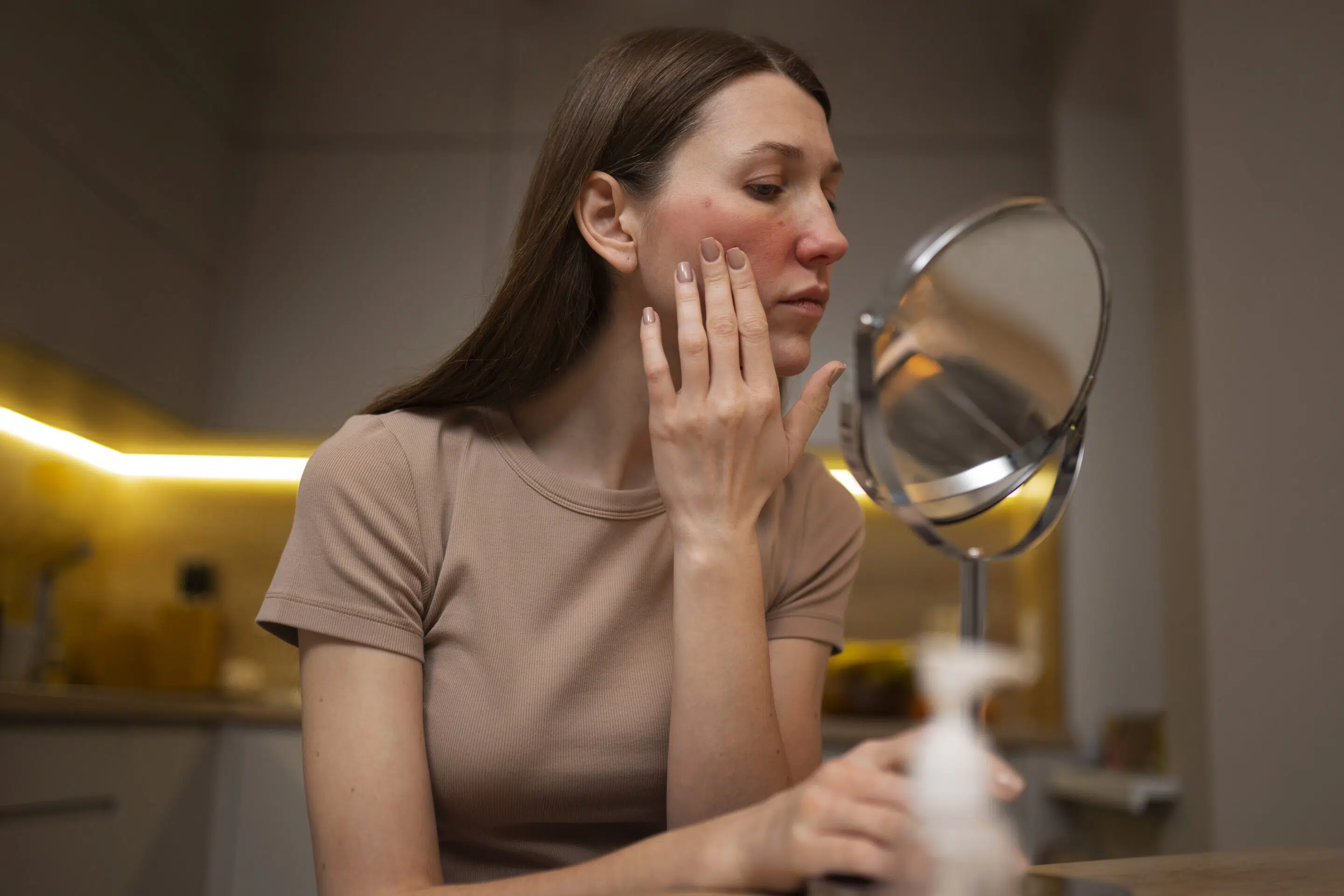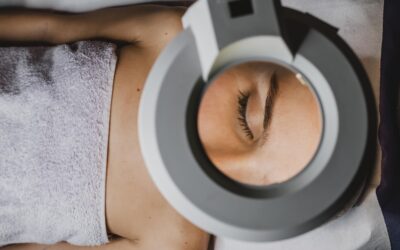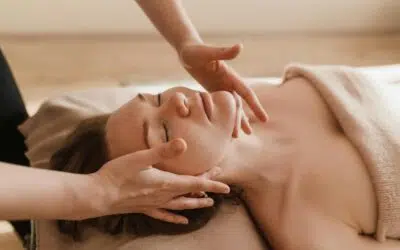Those brown spots scattered across your face, hands, and chest tell the story of countless sunny days from your past. While they’re often called “age spots,” the truth is that sun spots have very little to do with getting older and everything to do with sun exposure. The good news? If you’re wondering how to get rid of sun spots, the right sun spots treatment can help ensure these unwanted souvenirs from your time in the sun don’t become permanent fixtures on your skin.
The good news? With the right sun spots treatment, these unwanted souvenirs from your time in the sun don’t have to be permanent fixtures on your skin.
Understanding Sun Spots: More Than Meets the Eye
Sun spots/Sun Damage, also known as solar lentigines or age spots, are flat, brown or black patches that appear on sun-exposed areas of your skin. They’re caused by an overproduction of melanin, the pigment that gives your skin its color. When ultraviolet rays hit your skin, they trigger melanocytes (pigment-producing cells) to create more melanin as a protective response.
Here’s something fascinating about sun damage that most people don’t realize: the spots you see today were created years or even decades ago. Your skin has a remarkable memory system for UV damage. Scientists have discovered that melanocytes can remain “activated” for years after the initial UV exposure, continuing to produce excess pigment long after the sunburn has faded.
What makes this even more interesting is that sun spots often appear in a pattern that matches your past sun exposure habits. People who drove frequently may notice more spots on their left side (in countries where drivers sit on the left), while golfers often develop spots that follow the pattern of their golf attire and sun exposure during play.
The Science Behind Pigmentation
Your skin’s pigmentation system is actually an incredibly sophisticated defense mechanism. When UV rays penetrate your skin, they damage DNA in skin cells. In response, your body increases melanin production and distribution to create a natural sunscreen effect. This is why you tan after sun exposure – it’s your body’s attempt to protect you from further UV damage.
However, this system isn’t perfect. Over time, some melanocytes become overactive or damaged, leading to uneven pigment distribution. This is how sun spots form. They represent areas where your pigment-producing cells are essentially stuck in overdrive, continuing to pump out melanin even when there’s no immediate UV threat.
An interesting fact about melanin is that it exists in two main forms in human skin. Eumelanin provides brown to black pigmentation and offers significant UV protection, while pheomelanin produces red to yellow tones and actually provides less protection against UV damage. This is why people with lighter skin tones and skin redness, who have more pheomelanin relative to eumelanin, are more susceptible to sun damage and skin cancer.
Skincare Products: Your First Line of Defense
Before exploring professional treatments, it’s worth understanding what topical products can accomplish. While skincare products work more slowly than professional treatments, they can be remarkably effective for mild sun spots and are essential for preventing new ones from forming.
Hydroquinone remains the gold standard for lightening hyperpigmentation. This ingredient works by inhibiting tyrosinase, the enzyme responsible for melanin production. Think of it as putting the brakes on your overactive pigment cells. Prescription-strength hydroquinone (4%) is more effective than over-the-counter versions (2%), but it requires medical supervision due to potential side effects with long-term use. This product can significantly reduce existing pigment, but is not be safe for ongoing use.
Retinoid or retinol creams accelerate cell turnover and helps fade sun spots by bringing newer, less pigmented cells to the surface more quickly. It also has the added benefit of stimulating collagen production, addressing both pigmentation and aging concerns simultaneously. Sunscreen MUST be used daily when using retinol and you will have to slowly and carefully build up your skin’s tolerance, but this is a great option for ongoing use.
Vitamin C serums work as antioxidants and mild tyrosinase inhibitors. L-ascorbic acid, the most potent form of vitamin C, can help prevent new sun damage while gradually lightening existing spots. The key with vitamin C is consistency and proper formulation – it’s notoriously unstable and needs to be in the right pH range to be effective. Drug store versions are not going to make a huge difference, Vitamin C must be medical grade to be effective.
Kojic acid, derived from fungi, works similarly to hydroquinone but tends to be gentler on the skin. Arbutin, extracted from bearberry plants, releases hydroquinone slowly when applied to the skin, providing similar benefits with less irritation.
Chemical exfoliants like glycolic acid and lactic acid help remove the uppermost layers of pigmented skin while stimulating cell renewal. These alpha hydroxy acids work particularly well when combined with other lightening agents.
Professional Treatments for Lighter Skin Tones
For more dramatic and faster results, professional treatments offer superior options to topical products alone. The key is choosing the right treatment for your skin type and the severity of your sun spots.
IPL: The Versatile Light Treatment
Intense Pulsed Light (IPL) is often the go-to treatment for sun spots on lighter skin tones. Unlike lasers, which emit a single wavelength of light, IPL devices emit broad-spectrum light that can target multiple skin concerns simultaneously.
IPL works by delivering light energy that’s preferentially absorbed by the melanin in sun spots. This selective absorption heats and breaks up the excess pigment while leaving surrounding healthy tissue largely unaffected.
During an IPL treatment, you’ll feel a snapping sensation as the light pulses hit your skin. The treated spots typically darken immediately after treatment – this is actually a good sign that the melanin has absorbed the light energy. Over the following week to ten days, these darkened spots will flake off, revealing clearer skin underneath.
One of the advantages of IPL is that it can treat large areas efficiently, making it ideal for addressing sun damage on the face, chest, hands, and arms. Most people need a series of 1-3 treatments spaced about a month apart for optimal results.
IPL is only safe for lighter skin tones because there’s a greater contrast between the pigmented spots and the surrounding skin. This contrast allows the device to target the unwanted pigment more precisely while minimizing the risk of affecting normal skin tone.
Darker skin tones will absorb too much heat from the IPL and will burn.
Alexandrite Laser: Precision Pigment Removal
The Alexandrite laser represents a more targeted approach to sun spot removal. Operating at a wavelength of 755 nanometers, this laser is specifically absorbed by melanin, making it exceptionally effective for deeper pigmented lesions.
What sets the Alexandrite laser apart is its precision and power. Unlike IPL’s broad-spectrum approach, the Alexandrite laser delivers a specific wavelength specifically targeted that melanin absorbs very efficiently. This targeted energy delivery often means that sun spots can be treated more aggressively, sometimes requiring fewer sessions than IPL.
The Alexandrite laser works by delivering pulses of laser energy to the pigmented areas. essentially a controlled explosion of energy that shatters the pigment particles into tinier fragments. Your body’s immune system then naturally removes these fragments over the following weeks.
One interesting aspect of Alexandrite laser treatment is that it can effectively treat both superficial and deeper pigmentation. The laser energy can penetrate to different depths depending on the pulse duration and energy settings, allowing practitioners to customize treatments for various types of sun damage.
CoolPeel CO2: The Game-Changing Approach
Traditional CO2 laser treatments have long been considered the most effective option for sun damage, but they came with significant downtime and discomfort. CoolPeel represents a revolutionary advancement in CO2 laser technology that delivers the effectiveness of traditional CO2 treatments with minimal downtime.
CoolPeel works by using physical pulses of CO2 laser energy that remove the superficial layers of damaged skin without generating the excessive heat that causes prolonged recovery. The “cool” aspect refers to the fact that the laser energy is delivered so quickly that it doesn’t have time to heat the surrounding tissue significantly.
This innovative approach allows the CO2 laser to precisely target the pigmented surface layers while leaving the deeper skin largely unaffected. The result is effective sun spot removal with healing that typically takes just a few days rather than weeks.
What makes CoolPeel particularly effective for sun spots is its ability to target the exact layers of skin where most superficial pigmentation resides. The treatment literally removes the pigmented cells while simultaneously stimulating the production of new, healthy skin cells to replace them.
The precision of CoolPeel also means that practitioners can treat sun spots while simultaneously addressing other skin concerns like fine lines, texture irregularities, and scarring. This comprehensive approach makes it an excellent choice for people who want to address multiple signs of sun damage in a single treatment.
Recovery from CoolPeel typically involves 2-4 days of mild redness and mild flaking, similar to a moderate sunburn. Many people can return to normal activities 1-2 days after treatment, though sun protection is absolutely critical during the healing process.
Fascinating Facts About Sun Damage and Protection
The relationship between sun exposure and skin damage is more complex than most people realize. For instance, up to 80% of UV rays can penetrate clouds, which is why you can get sunburned on overcast days. Snow, sand, and water can reflect UV rays, essentially giving you a double dose of exposure. This reflection phenomenon explains why skiers often develop sun spots in unexpected patterns around their eyes and lower face.
Here’s something that might surprise you: glass blocks UVB rays (the ones that cause sunburn) but allows most UVA rays (the ones that cause aging and pigmentation) to pass through. This means you can develop sun damage while driving or sitting by a window, even though you’re not getting sunburned.
Your skin actually has a natural SPF of around 3-4, provided by its structure and natural melanin content. However, this minimal protection is quickly overwhelmed by significant sun exposure. Interestingly, your skin’s natural protection varies throughout the day and seasons – it’s typically highest in the evening and during winter months when melanin production is lower.
The timing of sun exposure matters more than many people realize. UV radiation is strongest between 10 AM and 4 PM, when the sun is highest in the sky. During these peak hours, you can receive the same amount of UV exposure in 15 minutes that you might get in an hour during early morning or late afternoon.
Prevention: Your Best Long-Term Strategy
While treatments can effectively remove existing sun spots, prevention remains your most powerful tool for maintaining clear, even-toned skin. The most important step is consistent, mineral sunscreen use.
Physical sunscreens containing zinc oxide or titanium dioxide work by reflecting UV rays away from your skin, while chemical sunscreens absorb UV energy and convert it to heat. Both types can be effective, but physical sunscreens tend to be more stable and less likely to cause skin reactions.
Antioxidant serums (medical grade only) can provide additional protection by neutralizing free radicals created by UV exposure. Ingredients like vitamin C, vitamin E, and ferulic acid work synergistically to enhance your skin’s natural defense mechanisms.
The Road to Clearer Skin
Sun spots don’t have to be a permanent reminder of your past sun exposure. Today’s treatment options offer effective solutions for virtually every type of pigmentation concern. Whether you choose the gentle approach of IPL, the precision of Alexandrite laser, or the comprehensive benefits of CoolPeel CO2, clearer, more even-toned skin is within reach.
The key to success lies in choosing the right treatment for your specific needs and, perhaps more importantly, committing to the sun protection habits that will preserve your results for years to come. With the right combination of professional treatment and ongoing prevention, you can enjoy the clear, radiant skin you thought might be lost forever to sun damage.




